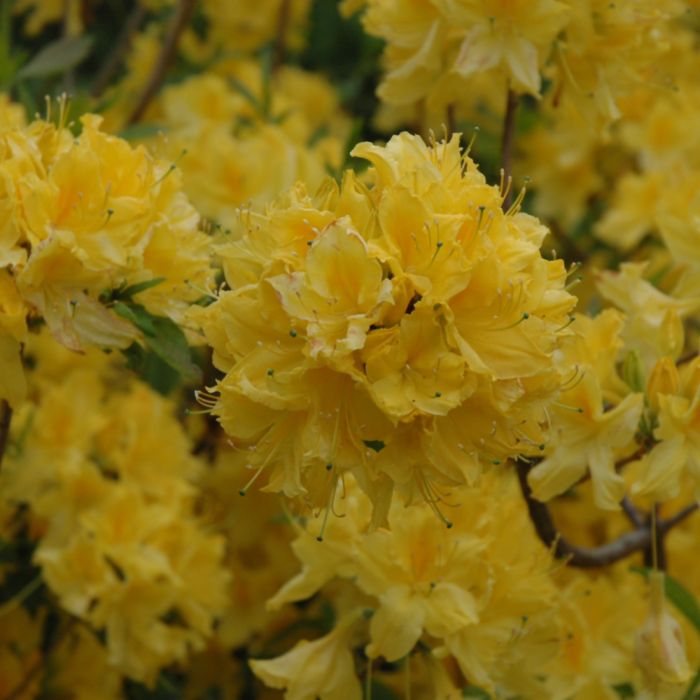Deer and Rabbit Resistant Plants
Deer and rabbits are lovely animals to gaze at from afar but not so lovely as they graze at your garden buffet. Gertens Experts provide a list of plants that they are less likely to eat!



Lemon Lights Azalea | Rhododendron 'Lemon Lights'
Brand: Gertens
A hardy deciduous azalea, smothered in showy fragrant light yellow flowers in spring before the leaves, tall upright habit and good fall color; absolutely must have well-drained, highly acidic and organic soil, use plenty of peat moss when plantingElevate your landscaping with Gertens' unmatched variety of shrubs! Selecting the right shrubs for your backyard can enhance its beauty and functionality. Consider factors like sunlight, soil type, and mature size when choosing shrubs. For sunny areas, flowering shrubs like roses or hydrangeas can add color and charm. In shady spots, opt for shrubs like azaleas or hostas. Evergreen shrubs provide year-round interest and privacy, while deciduous shrubs offer seasonal color changes. At Gertens, we offer a wide selection of shrubs to suit every backyard need.
Lemon Lights Azalea is smothered in stunning clusters of lightly-scented lemon yellow trumpet-shaped flowers with a yellow blotch at the ends of the branches in mid spring before the leaves. It has green deciduous foliage. The narrow leaves turn an outstanding purple in the fall.
Lemon Lights Azalea is an open multi-stemmed deciduous shrub with a more or less rounded form. Its relatively coarse texture can be used to stand it apart from other landscape plants with finer foliage.
This shrub will require occasional maintenance and upkeep, and should only be pruned after flowering to avoid removing any of the current season's flowers. It has no significant negative characteristics.
Lemon Lights Azalea is recommended for the following landscape applications;
Lemon Lights Azalea will grow to be about 5 feet tall at maturity, with a spread of 4 feet. It tends to be a little leggy, with a typical clearance of 1 foot from the ground, and is suitable for planting under power lines. It grows at a slow rate, and under ideal conditions can be expected to live for 40 years or more.
This shrub does best in full sun to partial shade. It requires an evenly moist well-drained soil for optimal growth, but will die in standing water. It is very fussy about its soil conditions and must have rich, acidic soils to ensure success, and is subject to chlorosis (yellowing) of the foliage in alkaline soils. It is somewhat tolerant of urban pollution, and will benefit from being planted in a relatively sheltered location. Consider applying a thick mulch around the root zone in winter to protect it in exposed locations or colder microclimates. This particular variety is an interspecific hybrid.
| Gerten Grown Plants | Gerten Grown Plants |
|---|---|
| Bloom Time | Spring |
| Sun Preference | Full-Sun, Part-Sun |
| Mature Height (Range) | 2 - 5 feet |
| USDA Hardiness Zone | 4, 5, 6, 7 |
| Common Family Name | Azalea |